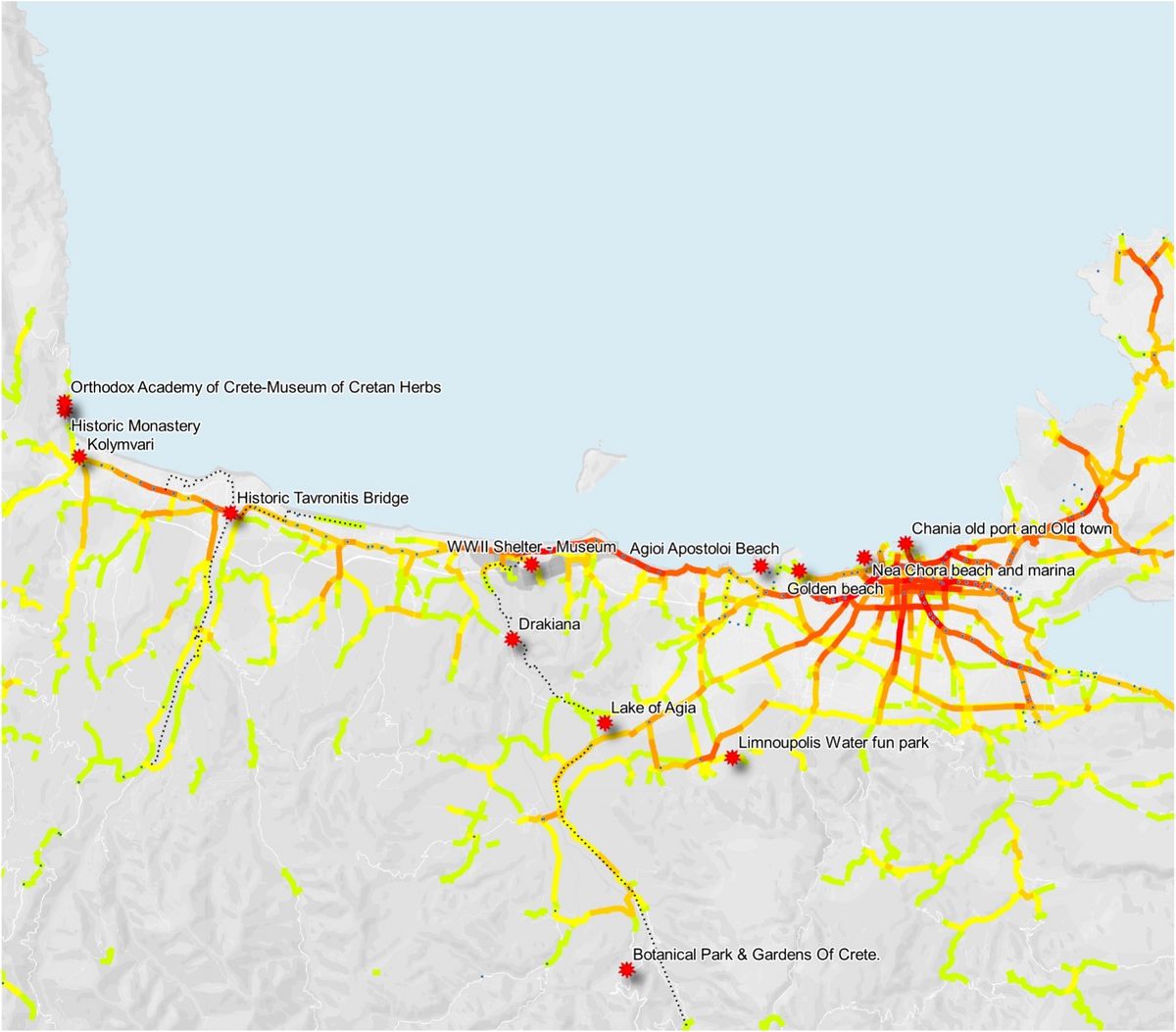
SUMP-PLUS is working with the city labs, Platanias and Alba Iulia, using advanced spatial analytics’ methodologies based on Space Syntax research and analysis.
Space syntax analysis is a unique, science-based and human-focused approach that forecasts the social, economic and environmental impacts of spatial conditions on the behaviour of people. The methodology developed for SUMP-PLUS is built on a set of evidence-based methods that forecast whether proposed policies, strategies, plans and designs will work to create the social, economic and environmental benefits that they are expected to. It is also tailored to support cities with limited resources.
Spatial Accessibility Analysis (SAA) is at the heart of the approach. This measures key properties of the urban network, which can then be linked to the movement potential of an area. Both the urban grain and structure of a place contribute to its accessibility; this can be defined as people’s ability to and the degree of ease with which they can move around in their environment. SAA takes into account route choice strategies and preferences of pedestrians, cyclists and vehicles and can robustly simulate journeys. The Spatial Accessibility Model is based on a unique representation of publicly accessible streets and paths. It is a transformation of the street pattern of an area into a network “graph”. The network is divided into individual “segments” of space, each one being the street or path between two intersections. Each segment is then evaluated using a mathematical algorithm to calculate the spatial accessibility of the network.

The key benefit of this approach, as opposed to traditional transport models, is that SAA can be performed with relative ease and a limited availability of data. SAA helps explain how the city works across different scales and for different modes of transport by identifying the hierarchy of centres and routes in an urban system.
The Spatial Accessibility Model is modular in nature and has the capability to integrate other urban spatial and non-spatial datasets, such as land use, population and employment density, and public transport networks. The ability to link to other datasets makes the Spatial Accessibility Model key to understanding the relationships between land-use planning, policy and spatial development. This approach provides cities with the tools to test and understand the impact of specific proposals, individual projects, and combined scenarios, thereby helping them in their efforts to ensure a social, economic and environmentally sustainable future.
Simplified analytical tool
Based on the experience of using these advanced analytics methodologies in the city labs, SUMP-PLUS is also developing an open-source simplified tool, together with accompanying guidance, for cities. This tool will be a set process using Space Syntax open source software, Excel and GIS, and will enable smaller cities working on a SUMP, to carry out their own simplified spatial analysis.
